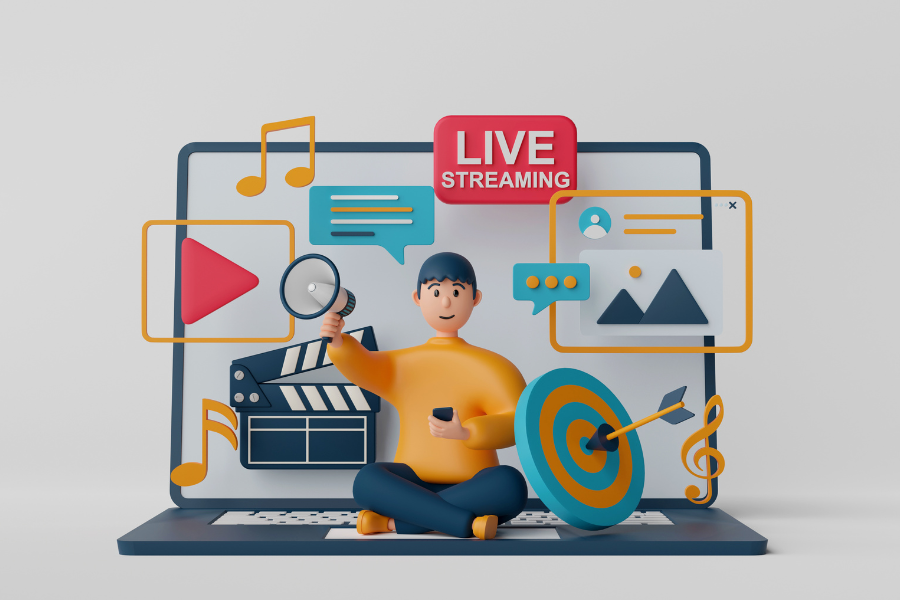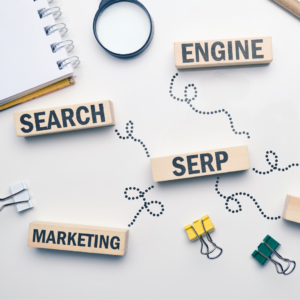What digital marketing channels should you focus on to capture your audience’s attention? This article provides a straightforward guide to the most effective channels. From harnessing the power of social media to decoding the complexities of SEO, we’ll help you understand where to invest your energy for maximum impact—without overwhelming you with jargon.
Key Takeaways
Understanding and strategically selecting the right digital marketing channels are crucial for successful audience engagement and achieving marketing objectives. Channel options include social media, SEO, email marketing, and more.
Social media platforms like Facebook, Instagram, and LinkedIn are key players in digital marketing. Each offers unique ways to connect with specific audience segments and foster brand relationships through targeted content and engagement strategies.
Search engine optimization (SEO) is essential for increasing online visibility and driving organic traffic. It involves various tactics, including on-page, off-page, and technical SEO, to improve search engine rankings and website performance.
Understanding Digital Marketing Channels

At the heart of every successful digital marketing strategy are the digital marketing campaigns that connect you with your audience. These are the tools you use to deliver your message, promote your products, and build a strong online presence. Implementing effective digital marketing strategies involves utilizing various channels, from social media platforms like Facebook and Instagram to search engine optimization and email marketing, each playing a unique role in reaching your marketing goals.
But how do you choose the right channels for your business? And what strategies should you use to maximize their effectiveness? Let’s delve deeper to unravel these mysteries.
Types of Digital Marketing Channels
Digital marketing channels are like the many roads that lead customers to your business. Each digital marketing channel offers unique opportunities to connect with your audience and drive them towards a desired action. Some key online marketing channels include:
Websites: serve as your digital storefront, showcasing your offerings and building credibility
Social media platforms: offer a more interactive space for engaging with your audience
Email marketing: allows for personalized communication that nurtures customer relationships
By utilizing digital channels effectively, you can maximize your reach and impact in the digital space.
Content marketing, on the other hand, involves creating and sharing valuable content to attract and retain a target audience. Each of these channels contributes to a comprehensive digital marketing strategy that caters to the unique needs and preferences of your target audience.
Importance of Choosing the Right Channels
Choosing the right digital marketing channels is like picking the right keys to unlock the doors to your success. But how do you determine which channels are right for your business? The answer lies in your specific objectives, the nature of your target audience, and your available budget. It’s about making strategic decisions based on data and insights.
For instance, if your target audience consists of younger generations, platforms like Snapchat or Instagram might be more effective than traditional channels. The ultimate goal is to choose channels that can impact critical business metrics, such as increasing brand awareness and driving sales.
1. Social Media Marketing: Connecting with Your Audience

Imagine walking into a party where everyone is eager to hear about your brand. That’s what social media marketing feels like. Social media platforms like Facebook and LinkedIn are bustling digital parties that provide an excellent stage for promoting your brand, building awareness, and deepening customer relationships.
But how do you make your voice heard in the cacophony of social chatter? And how do you transform casual social media interactions into meaningful customer relationships? The answer lies in crafting a comprehensive social media marketing strategy that resonates with your audience and fosters genuine interactions.
Facebook Marketing
Think of Facebook as a bustling digital marketplace where you can interact with your customers, showcase your products, and even acquire new customers. With over 2.8 billion active users, Facebook offers an unprecedented opportunity for customer acquisition and engagement. But how can you tap into this opportunity? The first step is to have a clearly defined mission for your Facebook marketing strategy. This could be anything from increasing brand awareness to driving website traffic or boosting online sales. The key is to align your Facebook marketing efforts with your overall business goals to ensure you’re moving in the right direction.
Instagram Marketing
If Facebook is the bustling marketplace, then Instagram is the trendy boutique that attracts the style-conscious crowd. With its visual-centric approach, Instagram offers a unique platform for showcasing your products in a visually appealing manner. Brands like Casetify use Instagram effectively to target customers, especially during the purchase stage.
But Instagram is not just about posting pretty pictures. It offers various features, like Stories and Reels, that can be used to create engaging and interactive content. Using these features effectively can help you capture your audience’s attention and increase their interaction with your brand.
LinkedIn Marketing
Welcome to LinkedIn, the world’s largest professional networking platform. With over 722 million members, LinkedIn is a goldmine for B2B marketers. It is where professionals seek valuable content, industry insights, and networking opportunities.
But how can you leverage LinkedIn for your marketing efforts? The first step is to create a compelling company page that highlights your brand’s unique value proposition. From there, it’s all about:
Connecting with your audience through engaging content
Participating in relevant discussions
Leveraging LinkedIn’s suite of marketing tools to reach your target audience.
2. Search Engine Optimization: Boosting Visibility and Traffic

Imagine having a shop in a bustling market but no signboard to guide customers to your shop. That’s what it feels like to have a website without Search Engine Optimization (SEO). SEO is the signboard that guides potential customers to your website. It is a fundamental aspect of digital marketing, including search engine marketing, that focuses on increasing your website’s visibility in search engines like Google to drive organic traffic, leads, and sales.
But how can you effectively optimize your website for search engines? Let’s delve deeper into the world of SEO to find out.
On-Page SEO
On-page SEO is like grooming your shop to make it attractive and easy to navigate for your customers. It involves optimizing different parts of your website that affect your search engine rankings. These include title tags, URL structure, and content structure.
For instance, optimizing your title tags can significantly impact your Google rankings. Similarly, having simple and descriptive URLs can help convey the content’s topic to users and search engines. The key is to align your on-page SEO efforts with your target audience’s search intent to attract quality traffic to your website.
Off-Page SEO
While on-page SEO is all about grooming your shop, off-page SEO is about promoting your shop in the local community. It involves strategies that improve your website’s position in the search engine results page (SERPs) through external elements such as backlinks, online PR, and social media marketing.
For instance, incorporating external links to authoritative sources can enhance user experience and establish trust, serving as a foundational element of building backlinks for off-page SEO. Similarly, online PR can help create a positive online reputation for your brand.
The key is to build a robust off-page SEO strategy that complements your on-page SEO efforts and boosts your overall website visibility.
Technical SEO
Technical SEO is like ensuring your shop has a solid foundation and is easy to access for everyone. It involves optimizing your website’s backend structure and foundation to improve your website’s readability and crawlability. Some key aspects of technical SEO include:
Making your website mobile-friendly, as mobile devices account for 58% of the consumer device market share
Optimizing your website’s loading speed
Implementing proper URL structure and canonical tags
Creating an XML sitemap
Optimizing your website’s robots.txt file
Focusing on these technical aspects can improve your website’s performance and visibility in search engine results.
Similarly, optimizing images using descriptive alt text can enhance rankings in Google Images, contributing to improved website performance. The key is to ensure your website is technically sound and accessible to both search engines and users.
3. Email Marketing: Personalized Communication and High ROI

Imagine having a personal conversation with each of your customers. That’s the power of email marketing. It allows you to connect with your audience in a highly personalized way, nurture your leads, and generate high conversions.
But how can you leverage email marketing to engage your audience effectively? Let’s explore this in the following sections.
Building Your Email List
Building an email list is like gathering a crowd for your event. It involves attracting potential customers to your brand and incentivizing them to provide their email addresses. This can be achieved through lead magnets like:
ebooks
checklists
webinars
quizzes
free trials
But how do you create a lead magnet that attracts quality leads? The answer lies in offering a solution to a significant problem and ensuring it’s closely aligned with your company’s paid product.
Crafting Effective Emails
Crafting an effective email is like preparing a captivating speech. It involves creating a compelling subject line, crafting engaging body copy, and ending with a clear call to action. For instance, a well-crafted subject line can significantly impact your email open rates.
Similarly, a clear and compelling call to action can improve your email’s click-through rate and conversions. The key is to align your email content with your audience’s needs and interests and continuously optimize your emails based on performance data.
Measuring Email Success
Measuring email success is like tracking the performance of your speech. It involves analyzing key performance indicators such as open rates, click-through rates, and conversion rates. These metrics can provide valuable insights into your email campaign’s performance and help you identify areas for improvement.
For instance, if your open rates are low, you might need to work on improving your subject lines. On the other hand, if your click-through rates are low, you might need to work on improving your call-to-action. The key is to continuously monitor your email performance and optimize your campaigns based on data-driven insights.
4. Video Marketing: Engaging and Entertaining Content

Imagine captivating your audience with compelling visual stories. That’s the power of video marketing. It allows you to create engaging and entertaining content that can significantly boost your audience engagement and conversions.
But how can you leverage video marketing to captivate your audience? Let’s delve deeper to find out.
Types of Video Content
There’s a myriad of video content types you can create to engage your audience, including:
Explainer videos that articulate why your audience may need your product or service
Case studies and customer testimonial videos that demonstrate how your product addresses specific user challenges
360-degree and virtual reality videos for an immersive viewing experience
The key is to choose the type of video content that resonates with your audience and aligns with your marketing goals.
Video Platforms
Just as you wouldn’t screen a movie in an empty theatre, you wouldn’t want to publish your videos on a platform where your audience isn’t present. Platforms like:
YouTube
Facebook
Instagram
TikTok
provide various avenues for sharing video content.
For instance, YouTube alone sees users spending 24 hours per month on the mobile app, highlighting its popularity and the extensive time audiences engage with video content on this platform. The key is to choose the right platform that aligns with your audience’s preferences and viewing habits.
Video SEO
Video SEO is like optimizing your movie for the best box office results. It involves optimizing your video content to improve its visibility on search engines and reach a larger audience. Some key strategies for video SEO include:
Optimizing a video’s metadata, such as titles and descriptions, to improve search engine visibility
Adding relevant tags to your videos to aid in searchability and visibility in search results
Creating a compelling thumbnail image to attract viewers
Using closed captions or subtitles to make your video accessible to a wider audience
Promoting your video through social media and other channels to increase its reach
Implementing these strategies can improve the visibility and reach of your videos, ultimately driving more traffic and engagement.
The key is to align your video SEO efforts with your target audience’s search intent to attract quality traffic to your videos.
5. Pay-Per-Click Advertising: Quick Results and Targeted Traffic
Imagine a billboard that only charges you when someone shows interest in your ad. That’s what pay-per-click (PPC) advertising feels like. It’s a paid advertising model where businesses pay each time their ads are clicked, and it offers quick results and targeted traffic.
But how can you leverage PPC advertising to drive quality traffic to your website? Let’s delve deeper to find out.
Google Ads
Google Ads is like a billboard on the busiest highway on the internet. It offers precise targeting based on keywords, ad location, demographics, and even the type of device used. Plus, it allows you to control your budget tightly, ensuring you only pay when your ad is clicked.
The key is to choose the right keywords that align with your target audience’s search intent and optimize your ads based on performance data to attract quality traffic to your website.
Social Media Ads
Social media ads are like digital flyers distributed in a bustling online community. They allow you to showcase your products and services and generate traffic and leads. Platforms like Facebook can target audiences based on specific demographics, interests, and behaviours, enabling precise targeting for your ad campaigns.
The key is to create engaging and relevant ads that resonate with your target audience and inspire them to take action.
Remarketing
Remarketing is like reminding someone about the product they were interested in but didn’t buy. It involves tracking users and retargeting them with relevant ads after they visit your website. It’s a powerful way to re-engage with previous visitors and convert them into customers.
The key is to create relevant and personalized ads that remind visitors of their previous interests and motivate them to complete their purchases.
6. Affiliate Marketing: Leveraging Partnerships for Sales Growth
Imagine having a network of trusted associates who promote your products and only get paid when they make a sale. That’s what affiliate marketing feels like. It involves partnering with other websites, influencers, or content creators who promote your products and get paid a commission for each sale they generate.
But how can you leverage affiliate marketing to boost your sales? Let’s explore this in the following sections.
Finding the Right Affiliates
Finding the right affiliates is like recruiting the right salespeople for your business. It involves:
Identifying individuals or businesses that have a strong influence over your target audience
Choosing affiliates who align with your brand values
Finding affiliates who have a genuine connection with their audience
Selecting affiliates who are capable of driving quality traffic to your website
By following these steps, you can find the right affiliates to promote your products effectively.
Managing Affiliate Relationships
Managing affiliate relationships is like nurturing a garden. It requires continuous attention, communication, and care to ensure a fruitful partnership. The key is to:
Build strong relationships with your affiliates
Provide them with the necessary tools and support
Continuously monitor and optimize their performance to ensure a profitable partnership.
Tracking Affiliate Performance
Tracking affiliate performance is like measuring the productivity of your sales team. It involves monitoring key performance metrics such as click-through rates (CTR), conversion rates, and average order value (AOV) to evaluate the success of your affiliate partnerships.
The key is to continuously monitor your affiliate’s performance, provide constructive feedback, and optimize your strategies based on performance data.
7. Influencer Marketing: Building Trust and Brand Awareness
Imagine having a trusted friend who vouches for your product to their followers. That’s what influencer marketing feels like. It involves teaming up with popular social media personalities to promote your products to their followers.
But how can you leverage influencer marketing to build trust and brand awareness? Let’s explore this in the following sections.
Choosing the Right Influencers
Choosing the right influencers involves:
Identifying influencers who have a strong influence over your target audience
Ensuring they align with your brand values
Ensuring they can effectively promote your products
It’s like selecting the best brand ambassadors for your products.
The key is to choose influencers who are authentic, have a genuine connection with their audience, and are capable of driving quality traffic to your website.
Collaborating with Influencers
Collaborating with influencers is like partnering with a trusted friend. Ensuring a successful partnership requires clear communication, mutual respect, and a shared vision. The key is to build strong relationships with your influencers, provide them with creative freedom, and continuously monitor and optimize their performance to ensure a profitable partnership.
Measuring Influencer Success
Measuring influencer success is like evaluating the performance of your brand ambassadors. It involves tracking key performance metrics such as engagement rates, reach, and conversions to evaluate the success of your influencer partnerships. The key is to monitor your influencer performance continuously, provide constructive feedback, and optimize your strategies based on performance data.
8. Conquer Digital Marketing: Your Basic Channel Blueprint
Ditch the generic and dive right into the specific! Here’s a rewrite for you, tailored to your “Basic Introduction to Digital Marketing Channels” course:
“Feeling lost in the digital jungle? This course is your machete. We’ll crack open the worlds of social media, SEO, video content, and email marketing, showing you how to wield them like a pro. Master the basics of each channel, discover how to connect with your audience, and finally, achieve those marketing goals you’ve been dreaming of. It’s your time to break free from the ordinary and conquer the digital world. Enrol now and unleash the power of effective online marketing!”
This rewrite uses a more engaging tone, highlights the course benefits directly, and positions it as a solution to a specific pain point (feeling lost in digital marketing). It also references the “basic” aspect of the course while emphasizing the power it unlocks.
To learn more, you can enrol at Off-Grid SkillsFuture Career Transition Programme titled “(SCTP) Advanced Certificate In Digital Retail“
Frequently Asked Questions
What are the key digital marketing channels?
The key digital marketing channels encompass websites, social media (such as Facebook, Instagram, and LinkedIn), email, SEO, PPC, content and video marketing, and affiliate marketing. These channels form the core of digital marketing strategies.
How can social media marketing benefit my business?
Social media marketing can greatly benefit your business by enhancing brand visibility, increasing customer engagement, improving brand loyalty, driving website traffic, boosting sales, and building strong customer relationships in realtime. These benefits can create significant opportunities for growth and success in your business.
What is the importance of SEO in digital marketing?
SEO is essential in digital marketing. It improves website visibility, drives organic traffic, and increases conversion rates while also contributing to brand reputation and customer engagement. Overall, SEO plays a critical role in the success of digital marketing efforts.
How can I measure the success of my email marketing campaign?
To measure the success of your email marketing campaign, focus on key performance indicators such as open rates, click-through rates, and conversion rates. These metrics offer valuable insights and can guide you in improving your campaign.
What is affiliate marketing, and how does it work?
Affiliate marketing is a partnership where an affiliate promotes a merchant’s products and earns a commission for sales or other actions generated through their referral link. It involves a merchant and an affiliate, typically another website or influencer.




